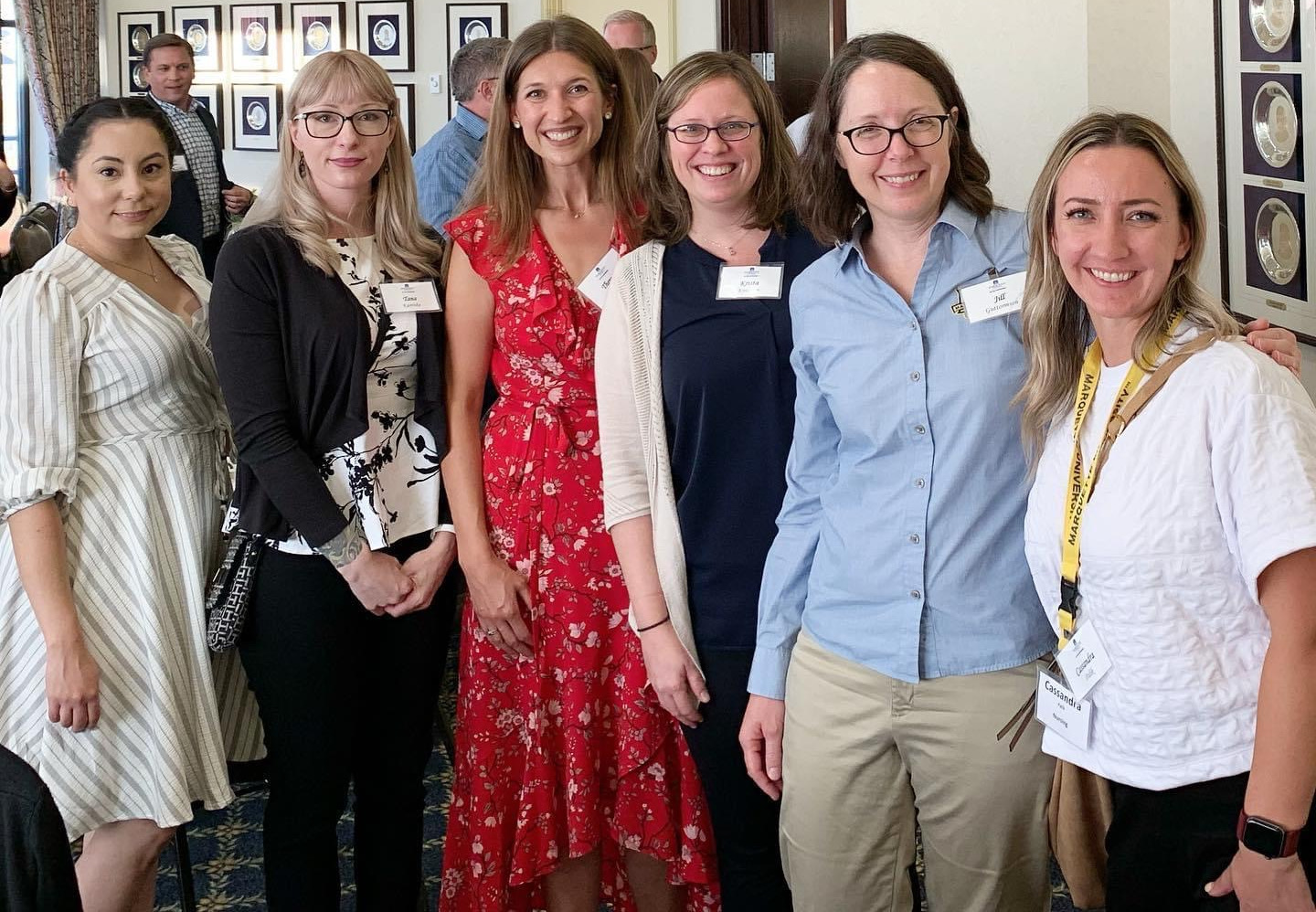The term “workplace orientation” can conjure rather generic images: getting an office tour, thinking up a new password, figuring out the copier code or maybe even having a team lunch with an icebreaker.
Dr. Amber Young-Brice draws a sharp distinction between these activities, which she considers merely “orientation,” and onboarding, which goes much deeper.
“The onboarding piece is more about what you need to know with regards to teaching and learning to be successful with our students,” the assistant professor of nursing at Marquette says.
Leaders in the College of Nursing saw the need for a system that helped new faculty acquire this knowledge, which led Young-Brice to develop the Teaching Excellence Program alongside Dr. Shelly Malin, adjunct instructor of nursing. New faculty members were automatically enrolled in the TEP, which met monthly its first year to discuss challenges, triumphs and how to better serve students.
The program, which started in 2019-‘20 with a cohort of 14 new faculty members, has bolstered the college’s faculty retention rate — nearly all are still teaching in the college.
Dr. Krista Knudson came into her assistant professor role relatively new to the job. The assistant professor of nursing was a nurse practitioner for over a decade, primarily caring for patients undergoing cardiac surgery. Her graduate and doctoral work at Yale, as well as her post-doctoral fellowships, provided foundational teaching experiences, but being responsible for a course provided another degree of difficulty.
“I was feeling a little bit overwhelmed about how to identify and address problems with students in a way that respected their diverse needs,” Knudson says. “On the first day of orientation, they introduced the idea of leaning into our students and that really caught my ear. I’ve come to an understanding that it means genuinely caring for and supporting every individual student and empowering them to succeed.”
New faculty and staff members go through university orientation, and faculty members receive additional support through the Center for Teaching and Learning. Young-Brice, who researches pedagogy, had an educational development role with the center. She quickly noticed the need for a similar support structure at the college level, where a thorough onboarding process often depended on individual mentor-mentee relationships instead of a formal process.
“Years ago, there wasn’t a formal mentoring process. Who you got partnered with as a mentor ended up determining how much you knew,” Young-Brice says. “That knowledge disparity was a huge anxiety for new faculty that we’ve alleviated through this program by standardizing the basic logistics.”
The TEP starts with the basics: how to operate D2L learning management systems or navigating student challenges, for instance. Once new professors grasp the basics, the TEP curriculum moves into professional development, with a timely topic such as how artificial intelligence is changing the way students can be evaluated.
For those who have spent most of their careers in a clinical setting, the TEP helps prepare them for unanticipated academic situations.
“When you’re in your own class, you may feel like you’re alone in the challenges you’re facing, but that’s not true,” Young-Brice says. “You’re experiencing the same thing as your fellow faculty. When we come together, the sharing really helps.”
“When you’re in your own class, you may feel like you’re alone in the challenges you’re facing, but that’s not true. You’re experiencing the same thing as your fellow faculty. When we come together, the sharing really helps.”
Dr. Amber Young-Brice
The group experience is useful for more than just brand-new faculty; it’s also indispensable for full-time professors making the leap from part-time status. That describes Theresa Bullis, who came to Marquette in 2016 as a clinical instructor. Now a clinical instructor, Bullis is a pediatric nurse practitioner who came to Marquette from working in both primary and urgent care.
Transitioning away from her hospital floor to an academic setting still came with much to learn, even for someone who had been teaching for six years. The TEP provides crucial support.
“Each TEP session revolved around a particular topic,” Bullis says. “Those topics ranged from College of Nursing- and university-specific issues to teaching strategies. During the sessions, we were encouraged to share concerns and any wins we experienced as faculty. We would have open discussions that allowed us to bounce ideas off each other. The sessions continuously built on my confidence as a nursing instructor and made me feel like part of a community.”
The College of Nursing’s Class of 2027 is more than 30 percent larger than its predecessor, which was already the largest class of the prior six academic years. A renovated Straz Hall will soon serve as the college’s new home, which will more than double the amount of space available to the college and support its strategic goal of educating 5,000 new nurses over the next decade.
Along with more space and more students comes a need for more faculty members. Many of them will come from the same place Bullis and Knudson did: local hospital and clinic floors.
“The principles stressed in Jesuit education overlap really well with what we’re already doing as nurses and what the profession of nursing is,” Knudson says. “I hadn’t been really aware of Jesuit values before coming to Marquette, but now I’m finding that it matches up incredibly well.”
As more nursing professors come from outside the classroom, the TEP will be there to make sure the switch from stethoscope to schoolbook is seamless.
“Everyone in the TEP seems to have developed a good level of comfort with the college and really grown into a community,” Young-Brice says.



